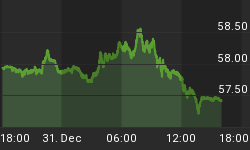Below is an extract from a commentary originally posted at www.speculative-investor.com on 11th November 2007.
The Stock Market and the Yen
Over the past 6 months we've repeatedly talked about the importance of the Yen, and especially the importance of the euro/Yen exchange rate, to the global upward trend in equity prices. Ultra-cheap Yen courtesy of Japan's near-zero interest rates has funded the purchases of equities throughout the world (with, in a wonderful example of irony, the notable exception of Japanese equities); but although Japan's interest rates aren't going to rise anytime soon, the Yen's cost to the international speculating community is rapidly increasing thanks to the gains being made by this currency in the foreign exchange market. This, in turn, is prompting speculators to exit their stock market positions.
Below is an updated version of the S&P500-euro/yen comparison that we've shown in many previous commentaries. We suspect that 162 is very important support for euro/yen and that the decisive breaching of this support would 'set the cat amongst the stock-market pigeons'.

Current Market Situation
Investors are still acting as if the mushrooming credit crisis will not disrupt global growth to a significant extent. We say this because emerging market equities and the stocks of large commodity-producing companies are holding up reasonably well. For example, the following chart shows that the world's largest listed copper producer (FCX) remains near its all-time high. If you were looking only at FCX's chart you could be forgiven for concluding that copper must be well above its May-2006 high of $4, rather than threatening to break below its August-2007 low of $3. As we noted in a recent commentary, it's as if the industrial metals bull market ended but investors in large-cap mining stocks never received the memo. This is perhaps because investors have learned over the past few years that it is safe to buy every significant dip in these stocks.

The following two charts tell interesting stories. The first chart shows that in real (gold) terms the S&P500 Index ended last week at its lowest level in more than 10 years, an interesting development made even more so by the fact that most people believe the US stock market to be immersed in a bullish trend. The second chart shows that the Dow Transportation Average (TRAN) is experiencing its most serious correction of the past few years. This correction has, to date, resulted in: a) a decisive break below the bottom of the long-term channel, b) the TRAN's most prolonged excursion below its 200-day moving average since the beginning of its cyclical bull market, and c) the breach of intermediate-term lateral support at 4700. The only thing now standing in the way of a definitive signal that the 'transports' are in a cyclical bear market is lateral support at 4500.
Strangely, there is no evidence at this stage that the spectacular upward trend in international shipping rates -- as measured by the Baltic Dry Index -- has come to an end.


Lastly, we have rehashed, below, the comparison between the S&P500 Index and the HYG/LQD ratio that we included in a TSI commentary a few weeks ago. The idea behind this chart comparison is that the HYG/LQD ratio -- a measure of how high-yield corporate bonds are performing relative to investment-grade corporate bonds -- is leading the stock market by 3-5 weeks.
If the relationship continues to work the way it has been working and the HYG/LQD ratio remains above its October low then the S&P500 Index should reach a short-term bottom within the next two weeks.

















